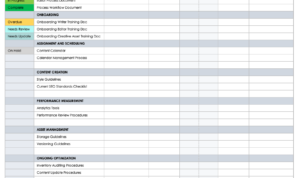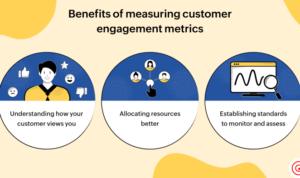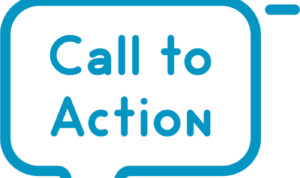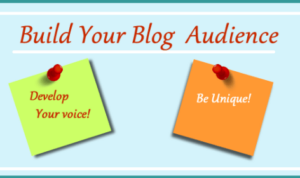Creating Effective Sales Emails dives deep into the world of email marketing, offering insights and strategies to boost your sales game. Get ready to revolutionize your email campaigns and connect with your audience like never before.
From understanding the key elements of a successful sales email to crafting compelling subject lines and personalized content, this guide has got you covered.
Understanding Effective Sales Emails
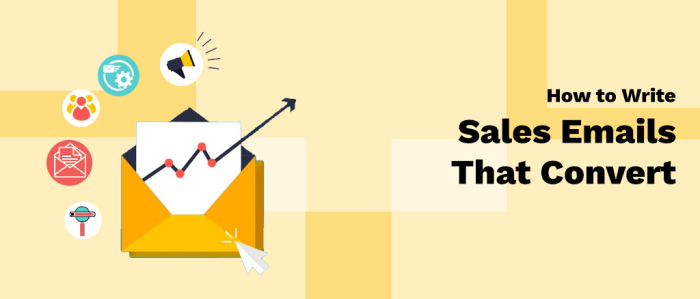
When it comes to crafting effective sales emails, there are a few key elements that can make all the difference in capturing your audience’s attention and driving conversions. From personalization to a strong call-to-action, each component plays a crucial role in the success of your email campaigns.
Personalization in Sales Emails
Personalization is not just a buzzword – it’s a game-changer in the world of sales emails. By tailoring your messaging to individual recipients based on their preferences, behaviors, and demographics, you can create a more engaging and relevant experience for them. Personalized emails have been shown to generate higher open rates, click-through rates, and conversions compared to generic mass emails. Make sure to use the recipient’s name, reference past interactions, and offer customized recommendations to make your emails stand out.
The Role of a Strong Call-to-Action
A strong call-to-action (CTA) is the driving force behind your sales emails. It’s the prompt that tells your recipients what action to take next, whether it’s making a purchase, signing up for a webinar, or downloading a resource. Your CTA should be clear, compelling, and prominently placed within your email. Use action-oriented language, create a sense of urgency, and make it easy for recipients to follow through. Without a strong CTA, your sales emails may fall flat and fail to drive the desired results.
Crafting Compelling Subject Lines
When it comes to sales emails, the subject line is your first impression. It’s the deciding factor on whether your email gets opened or sent straight to the trash. Crafting a compelling subject line is crucial for capturing the attention of your audience and increasing open rates.
Tips for Creating Attention-Grabbing Subject Lines
Here are some tips to help you create subject lines that will make recipients want to click:
- Keep it concise: Aim for subject lines that are around 40-50 characters. Short and sweet is the way to go.
- Personalize it: Use the recipient’s name or company name to make the email feel more tailored to them.
- Create a sense of urgency: Use action words and deadlines to encourage immediate action.
- Pose a question: Asking a question can pique curiosity and prompt the recipient to open the email to find the answer.
- Avoid spammy language: Stay away from all caps, excessive exclamation points, and sales-y phrases.
Ideal Length and Tone for Subject Lines in Sales Emails
The ideal length for subject lines in sales emails is typically between 6 to 10 words or 40 to 50 characters. This length allows you to convey your message concisely while still grabbing attention. In terms of tone, it’s important to strike a balance between being professional and engaging. You want to entice the recipient to open the email while still maintaining credibility.
Examples of Subject Lines with High Open Rates, Creating Effective Sales Emails
Here are some examples of subject lines that have been proven to have high open rates:
-
“Don’t miss out on our exclusive offer!”
-
“Last chance to save big on your next purchase!”
-
“Unlock VIP access to our newest products”
-
“Your personalized discount is inside…”
-
“Limited time offer: Get 20% off now!”
Design and Layout
When it comes to creating effective sales emails, the design and layout play a crucial role in capturing the recipient’s attention and encouraging them to take action. A clean and professional email design not only reflects positively on your brand but also makes it easier for the reader to navigate through the content.
Importance of a Clean and Professional Email Design
A well-designed email conveys credibility and trustworthiness to the recipient. It should be visually appealing, with a clear hierarchy of information, making it easy for the reader to scan through and understand the key message. Avoid cluttered layouts, excessive use of colors, and fonts that are hard to read. Remember, simplicity is key in creating a professional email design that resonates with your audience.
Use of Visuals and Multimedia in Sales Emails
Visual elements such as images, videos, infographics, and GIFs can enhance the overall appeal of your sales emails. They can help break up long blocks of text, make the content more engaging, and convey information more effectively. However, it’s important to use visuals strategically and ensure they are relevant to the message you’re trying to convey. Be mindful of file sizes to prevent slow loading times and optimize for mobile devices.
Best Practices for Optimizing Email Layout for Different Devices
With the increasing use of mobile devices, it’s essential to optimize your email layout for various screen sizes. Here are some best practices to consider:
- Use a responsive design that adapts to different devices and screen sizes.
- Keep the most important information at the top of the email to ensure it’s visible without scrolling.
- Avoid using large images that may take longer to load on mobile devices.
- Use a single-column layout to make it easier for mobile users to read and interact with the email.
- Test your emails on different devices and email clients to ensure they display correctly.
Personalization and Segmentation

Personalization in sales emails is crucial for building relationships with customers and increasing engagement. By tailoring the content of the emails to the recipient’s interests, preferences, and behavior, you show that you understand their needs and can provide solutions that are relevant to them. This personal touch can lead to higher open rates, click-through rates, and ultimately, conversions.
Segmentation, on the other hand, involves dividing your email list into smaller, more targeted groups based on specific criteria such as demographics, purchase history, or engagement level. By segmenting your list, you can send more relevant and targeted messages to each group, increasing the chances of conversion. It allows you to send the right message to the right people at the right time, making your email campaigns more effective.
Benefits of Personalized Content
- Increased engagement and open rates
- Improved customer relationships and loyalty
- Higher conversion rates
- Relevance and tailored solutions for recipients
Benefits of Segmentation
- More targeted messaging
- Higher response rates
- Improved deliverability and inbox placement
- Better understanding of customer preferences and behavior
Strategies for Effective Segmentation
- Use demographic information such as age, location, or job title to create targeted groups.
- Segment based on past purchase behavior or engagement with previous emails.
- Create segments for different stages of the customer journey, such as leads, prospects, or repeat customers.
- Utilize surveys or feedback forms to gather more data for segmentation.
Writing Persuasive Email Copy
Crafting compelling and persuasive email copy is essential to grab the reader’s attention and drive conversions. Here are some tips to help you create effective email content that resonates with your audience:
Use of Storytelling in Sales Emails
Storytelling is a powerful tool in sales emails as it helps to create a connection with the reader on an emotional level. By incorporating stories into your email copy, you can make your message more engaging and relatable. For example, you can share a customer success story or a personal anecdote that highlights the benefits of your product or service.
Examples of Effective Email Copy
– “Meet Sarah: How She Doubled Her Sales in Just One Month with Our Product!”
– “Don’t Miss Out! Limited Time Offer: Get 50% Off Your Next Purchase”
– “Unlock Your Full Potential: Join Our Exclusive Community Today!”
A/B Testing and Analytics: Creating Effective Sales Emails
In the world of sales emails, A/B testing and analytics play a crucial role in determining the success of your campaigns. By testing different elements and analyzing data, you can optimize your emails for better engagement and conversions.
Importance of A/B Testing
A/B testing allows you to compare two versions of an email to see which one performs better. By testing variables such as subject lines, call-to-action buttons, images, and copy, you can identify what resonates best with your audience. This iterative process helps you refine your emails and improve their effectiveness over time.
- Test different subject lines to see which ones have higher open rates.
- Experiment with different layouts and designs to determine what drives more clicks.
- Try out different calls-to-action to see which ones lead to more conversions.
Remember, A/B testing is not a one-time event but an ongoing process to continuously optimize your sales emails.
Key Metrics to Track and Analyze
When it comes to email marketing campaigns, it’s essential to track and analyze key metrics to measure the success of your efforts. Some important metrics to monitor include:
- Open rate: Measure how many recipients open your emails.
- Click-through rate: Track how many recipients click on links within your emails.
- Conversion rate: Monitor the percentage of recipients who take the desired action after clicking on a link.
- Bounce rate: Keep an eye on how many emails are not delivered to recipients’ inboxes.
Refining Email Strategies with Analytics
Analytics provide valuable insights into the performance of your sales emails. By analyzing the data collected from A/B testing and tracking key metrics, you can make informed decisions to refine your email strategies for better results. Whether it’s adjusting your messaging, optimizing your design, or targeting specific segments, analytics can guide you in creating more effective and engaging sales emails.
